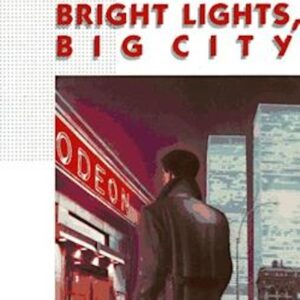I don’t listen to music in the car that much anymore, but for the past few months or so, I’ve found myself playing just one song, over and over again—“Five Years,” by Davie Bowie. It’s the first song on the first side of the 1972 album The Ballad of Ziggy Stardust and the Spiders from Mars, though it is quaint today to refer to something so literal as albums having “sides.”
Most of the time, popular music is about sex and money, but the subject of “Five Years” is nothing less than Apocalypse. The lyrics drop us in medias res into the middle of a city scene, where the end of the world has just been announced:
Pushing through the market square So many mothers sighing (sighing) News had just come over We had five years left to cry in. News guy wept and told us Earth was really dying (dying) Cried so much his face was wet Then I knew he was not lying (lying)…
Turns out I wasn’t the only one ruminating on this song. In an NPR interview, Cowboy Junkies singer Margo Timmins spoke about “Five Years,” which the band covered as the first song on their new album, Songs of the Recollection. When host Debbie Elliott commented that the song “felt very relevant to today,” Timmins concurred that, indeed, as “the ultimate opening track of, certainly, any record of that era…[“Five Years”] speaks of how most of us feel right now. It’s a pretty messed-up world and a bit [more] messed up in the last two years.”
The interview was all the way back in March, but the song—the original—was already on my playlist, and has stayed there, on repeat. Because everything does, in fact, feel like an Apocalypse. This isn’t a newspaper Op-Ed, so I won’t go into the standard roll call of calamities—pandemic, disruption, collapsing trust in institutions, “the center cannot hold”™ that pundits intone. You all know that litany as well as I do.
It’s the individual lives shocked by the news of Apocalypse that interest me—and that’s something that “Five Years”’ third-person narrator limns in these vignettes with exquisite economy. There’s the above-mentioned “news guy,” the cop who “kneeled to kiss the feet of a priest,” and “the queer who threw up at the sight of that.”
There’s something else about that that feels familiar, too: It’s that evocation of a midrange perspective, a quick sweep of thumbnail biographies that somehow, at the same time, contain an essence.
And then it hit me. Of course. “Five Years” was more prescient than anyone could have known, because these vignettes, these kinds of little stories the song details, evoke the ones we read now, whenever some kind of tragedy has taken place—the most recent and prominent one being the shooting of schoolchildren in Uvalde, Texas. (I cannot match Tony Woodlief’s poignant reflection on those losses, which you should go read if you have not.)
We all know this language now. There are the visuals: the capture of a life by a gesture, the low-res phone photographs of the graduation gown, the quinceañera veil, the wildly incongruous shots of sunglasses and lip gloss and Employee of the Month commemorations. There are, also, the words: the excerpts of last texts and cards and letters. And there are, finally, the damned teddy bears and wilted balloons and vulgar-colored bouquets of artificial flowers.
When, exactly, did this grammar of grief emerge?
In my lifetime, it would seem to be the daily pages of biographies of 9/11 dead published in The New York Times’s landmark project, A Nation Challenged. And the homemade posters of the missing that flocked the walls and telephones of the city.
Then there were the dead from the wars in Iraq and Afghanistan. Almost every night during the height of the conflicts—for almost a decade—The PBS NewsHour memorialized the lost in a dissolving series of silent photographs at the end of the episode. The poet Wyatt Prunty captured that weekly ritual poignantly in his poem “The Returning Dead.” Here are its first stanzas:
Each night I make a drink and wait for them They have become the day's concluding news, Installments from a world without anthems Or children, unfocusing eyes A question that repeatedly rejects My easy terms. They are ones who believed And acted in the narrow and select Ways handed them, while ordinary lives Ran on without interruption Or bad pictures, as though nothing had changed Change is the one unanswerable question Of these faces…
Change is the one unanswerable question of these faces.
The same observation, and the emotions it summons, applies to all our contemporary attempts at commemoration. In a secular culture, these rituals and gestures form what is perhaps the only common body of religious feeling—a country-wide embodiment of that deep sense of how we individuals are connected to one another, and how that connection is both enduring and evanescent, across all change.
Another line from “Five Years” sounds that same note, and never fails to make me cry:
And all the fat-skinny people and all the tall-short people and all the nobody people and all the somebody people I never thought I’d need so many people….
I, too, never thought I’d need so many people. In this urge to invoke “all the people,” whether dead or alive, we lift them up to the clear light of the eternal.
And I do not mean that purely in a metaphorical sense: This common impulse, I believe, manifests the possibility (the reality, I would say—but then again, I’m one of those believers) of connection outside Time.
It is one thing to find that transcendence in the already departed. Our challenge is to pull down that transcendence and make sure that we always see it, incarnated in all of us who are living.
A couple of weeks ago, when I was on a visit to my hometown in the Mississippi Delta, I had a visit with an old family friend, a man who recently turned 103. This man had once lived all around the globe as part of a distinguished and learned career; he spoke some six languages but was always notable for his sunny spirit and generous enthusiasm.
That world is gone for him, now. It has shrunk down, now, to the space between his room and the porch, where we sat by the wooden balustrade and watched the birds lighting on the trees. “Now here’s a red-headed woodpecker!” he said, and then there was a cardinal. The streets of my once-bustling hometown were silent, but the giant limbs of the hundred-year-old trees continued to sway, green, overhead.
But, prompted by my brother, the man had something to say. He could remember, then pronounced, with precision, the first quatrain of the Rubaiyat of Omar Khayyam:
Wake! For the Sun, who scattered into flight The Stars before him from the Field of Night, Drives Night along with them from Heav'n and strikes The Sultan's Turret with a Shaft of Light.
And in that moment I could see—could feel, even—that thing that was both solid and liquid at once, linking us together. And all times, before and after. And always.
Caroline Langston was a regular contributor to Image’s Good Letters blog, and is writing a memoir about the U.S. cultural divide. She has contributed to Sojourners’ God’s Politics blog, and aired several commentaries on NPR’s All Things Considered, in addition to writing book reviews for Image, Books and Culture, and other outlets. She is a native of Yazoo City, Mississippi, and a convert to the Eastern Orthodox Church. She lives outside Washington, D.C., with her husband and two children.





